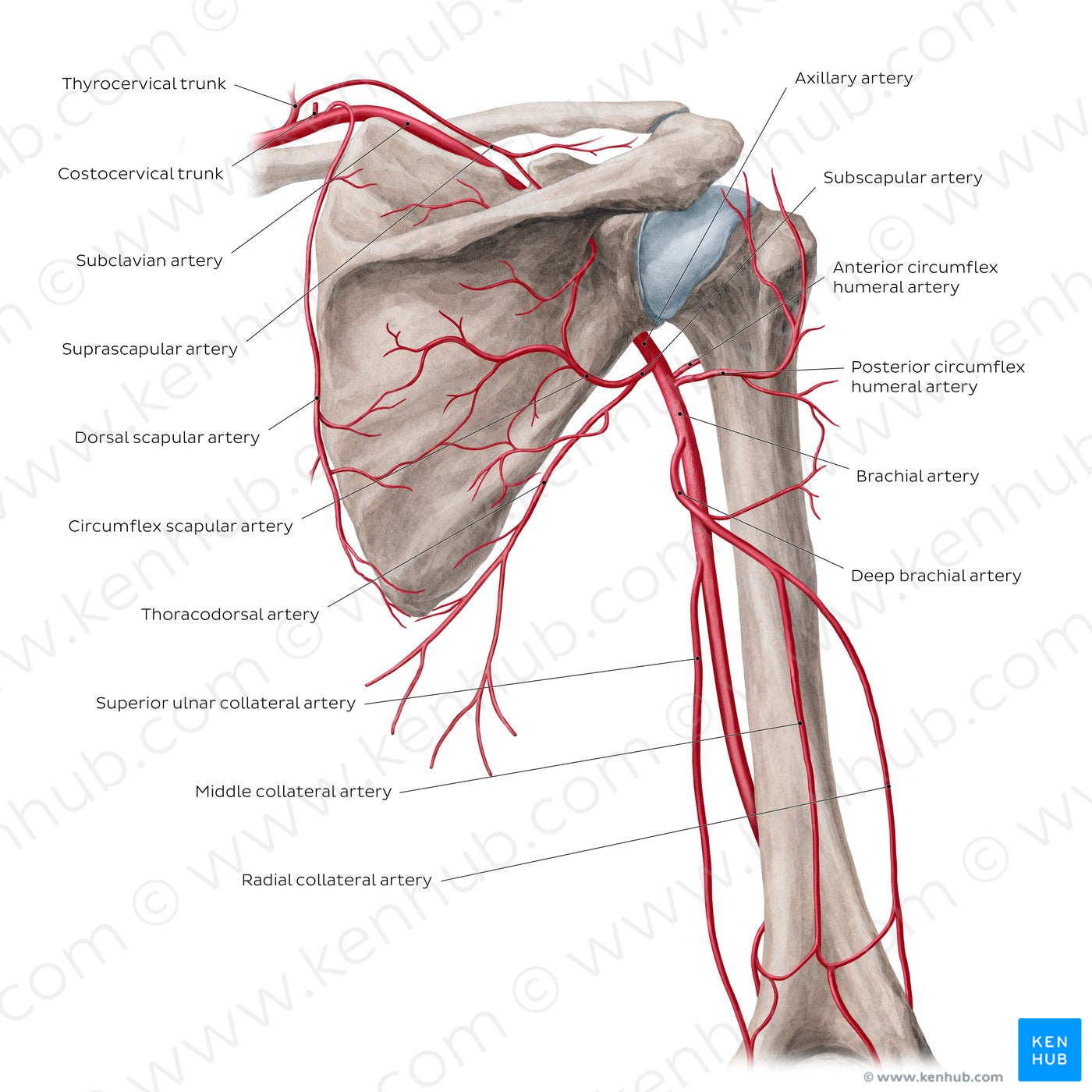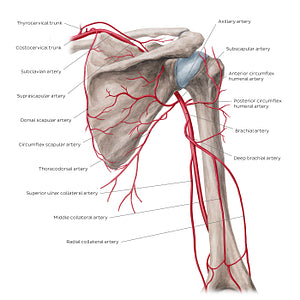Yousun Koh
Arteries of the arm and the shoulder - Posterior view (English)
Arteries of the arm and the shoulder - Posterior view (English)
Oxygenated blood is supplied to the proximal upper limb (pectoral girdle region) by arterial branches originating from the subclavian artery. The thyrocervical trunk, a short and wide vessel arising from the first segment of the subclavian artery, vascularizes the deep cervical and shoulder muscles as well as the skin of the neck and shoulders. A branch of the thyrocervical trunk, the suprascapular artery, courses inferolaterally towards the superior border of the scapula to supply muscles in the shoulder and scapular region, including skin of the upper thoracic cage and shoulder. The dorsal scapular artery, an independent branch of the subclavian artery, supplies two superficial muscles of the back, the levator scapulae and rhomboid muscles. It anastomoses with the suprascapular artery in the posterior scapular region. Together with the subscapular artery and its branch, the circumflex scapular artery, they form the scapular anastomosis. The thoracodorsal artery, a branch of the subscapular artery, descends with the thoracodorsal nerve to supply muscles of the back and skin in the axillary region. The largest branch of the brachial artery is the deep brachial artery which supplies the posterior arm muscles. It divides into two branches, the middle collateral and the radial collateral arteries which contribute to the arterial anastomosis of the elbow. Specifically, the radial collateral artery supplies the radial nerve, the brachioradialis and brachialis muscles.
Normaler Preis
$7.56 USD
Normaler Preis
Verkaufspreis
$7.56 USD
Grundpreis
pro
Verfügbarkeit für Abholungen konnte nicht geladen werden


#A80415
#9F565A
#95030B
#5A292B
#E65C72 und #CDB3AC

